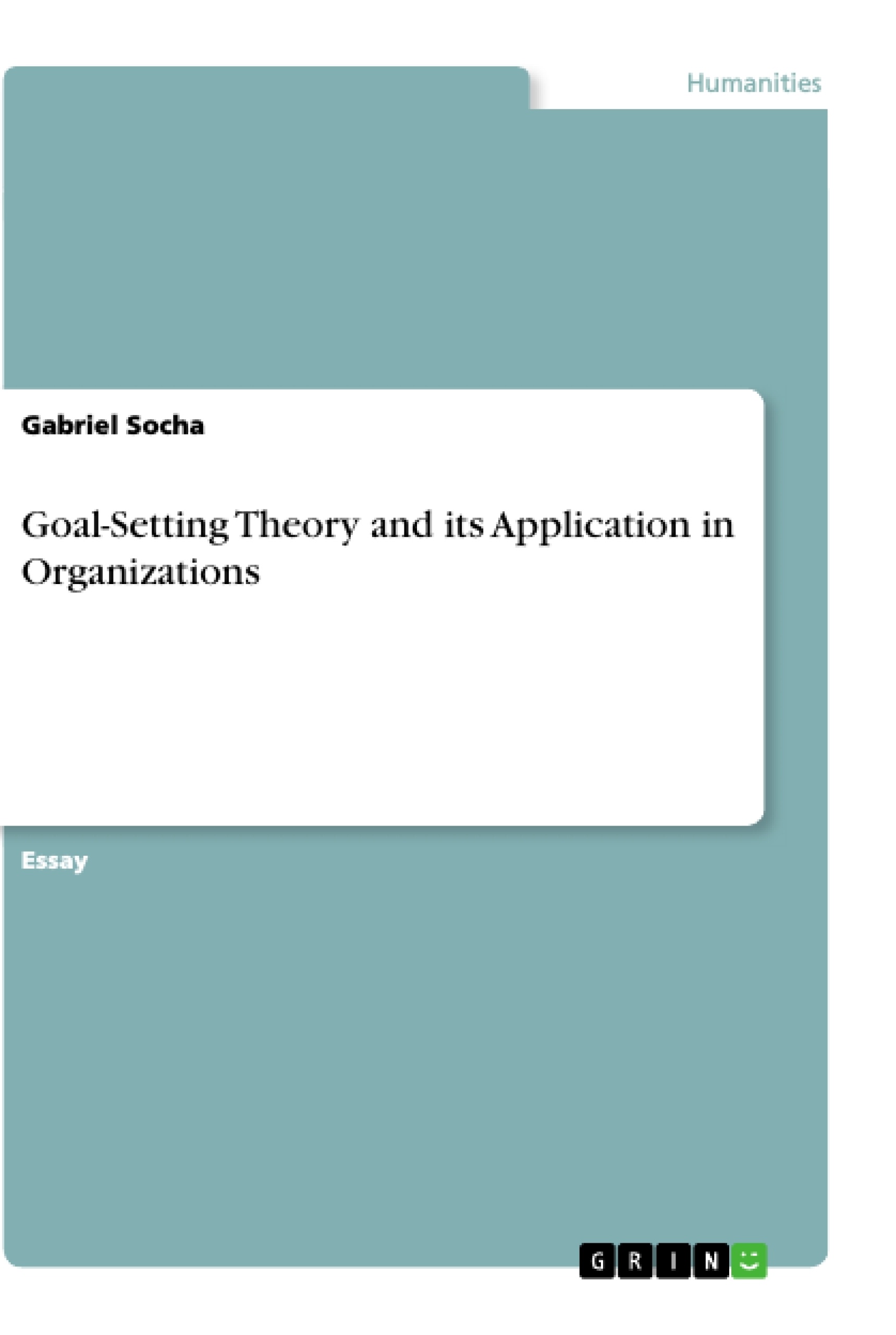The objective of this essay is to explore if Goal-Setting Theory is a suitable concept to increase an employee’s performance in an organization. Goal-Setting Theory is a motivational theory developed by Locke and Latham in 1990 which states that correctly formulated goals optimize motivation and therefore increase performance. For the purpose of this essay, theoretical basics of Goal-Setting Theory and its application fields in organizations are provided. Furthermore, the strengths and weaknesses of the theory are discussed critically.
Table of Contents
- 1. Introduction
- 2. Goal-Setting Theory
- 2.1. Theoretical Basics
- 2.2. Application Fields in Human Resource Management
- 3. Critical Appraisal of Goal-Setting Theory
- 4. Conclusion and Outlook
Objectives and Key Themes
This essay aims to investigate the applicability of Goal-Setting Theory (GST) in enhancing employee performance within organizations. It examines whether correctly formulated goals, as proposed by Locke and Latham, effectively optimize motivation and subsequently improve performance. The essay explores the theoretical foundations of GST, its practical applications in human resource management, and critically analyzes its strengths and weaknesses.
- Goal-Setting Theory and its foundational principles
- The application of GST in human resource management
- Strengths and limitations of GST
- The impact of goal setting on employee motivation and performance
- Critical evaluation of GST's effectiveness in various organizational contexts
Chapter Summaries
1. Introduction: This introductory chapter sets the stage by highlighting the intense competition faced by modern companies and the crucial role of employee performance optimization. It emphasizes motivation as a key factor in unlocking employee potential and underscores the challenges managers face in motivating their teams. The chapter introduces Goal-Setting Theory (GST) as a potential solution, noting its origins in Locke's research and its subsequent development by Locke and Latham. It establishes the essay's central research question: Is GST a suitable concept for improving employee performance? The chapter concludes by outlining the essay's structure, which involves exploring the theoretical basis of GST, its application, and a critical appraisal of its effectiveness.
2. Goal-Setting Theory: This chapter delves into the theoretical underpinnings of Goal-Setting Theory and its practical applications within organizations. Section 2.1 provides a detailed explanation of the theory's core principles, elucidating how correctly formulated goals can influence motivation and performance. Section 2.2 focuses on the practical application of GST within human resource management, demonstrating its relevance and use in various organizational settings. The chapter synthesizes the theoretical and practical aspects of GST to offer a comprehensive understanding of its mechanisms and application.
3. Critical Appraisal of Goal-Setting Theory: This chapter offers a balanced and critical analysis of Goal-Setting Theory. It examines both the strengths and limitations of the theory, considering its effectiveness in different contexts and its potential drawbacks. The discussion critically evaluates the applicability of GST to complex job types and explores potential negative consequences such as stress and pressure. This chapter synthesizes arguments for and against the widespread application of GST, providing a nuanced perspective on its overall value.
Keywords
Goal-Setting Theory, Motivation, Organizational Behavior, Employee Performance, Human Resource Management, Goal Setting, Performance Improvement, Motivation Theories, Organizational Psychology.
Frequently Asked Questions: A Comprehensive Language Preview
What is the main topic of this essay?
The essay focuses on Goal-Setting Theory (GST) and its applicability in enhancing employee performance within organizations. It examines whether correctly formulated goals effectively optimize motivation and improve performance.
What are the key themes explored in the essay?
The key themes include the theoretical foundations of GST, its practical applications in human resource management, a critical analysis of its strengths and weaknesses, the impact of goal setting on employee motivation and performance, and a critical evaluation of GST's effectiveness in various organizational contexts.
What are the main chapters and their content?
The essay is structured into four chapters: Chapter 1 (Introduction) sets the context and introduces GST; Chapter 2 (Goal-Setting Theory) delves into the theoretical underpinnings and practical applications of GST; Chapter 3 (Critical Appraisal of Goal-Setting Theory) provides a balanced analysis of the theory's strengths and limitations; and Chapter 4 (Conclusion and Outlook) summarizes the findings.
What are the theoretical foundations of Goal-Setting Theory discussed in the essay?
The essay explores the core principles of Goal-Setting Theory, explaining how correctly formulated goals can influence motivation and performance. It likely draws upon the work of Locke and Latham.
How does the essay apply Goal-Setting Theory to Human Resource Management?
The essay examines the practical application of GST within human resource management, showcasing its relevance and use in various organizational settings. It likely demonstrates how to implement GST effectively in real-world scenarios.
What are the strengths and weaknesses of Goal-Setting Theory as discussed in the essay?
The essay critically evaluates both the strengths and limitations of GST. This includes considering its effectiveness in different contexts and exploring potential drawbacks such as stress and pressure. It offers a nuanced perspective on its overall value.
What is the overall conclusion of the essay regarding the effectiveness of Goal-Setting Theory?
The conclusion will likely summarize the findings of the critical appraisal, offering an overall assessment of GST's suitability for improving employee performance. It may suggest areas for further research or practical application.
What are the keywords associated with this essay?
Keywords include: Goal-Setting Theory, Motivation, Organizational Behavior, Employee Performance, Human Resource Management, Goal Setting, Performance Improvement, Motivation Theories, Organizational Psychology.
- Quote paper
- Gabriel Socha (Author), 2018, Goal-Setting Theory and its Application in Organizations, Munich, GRIN Verlag, https://www.grin.com/document/453065




